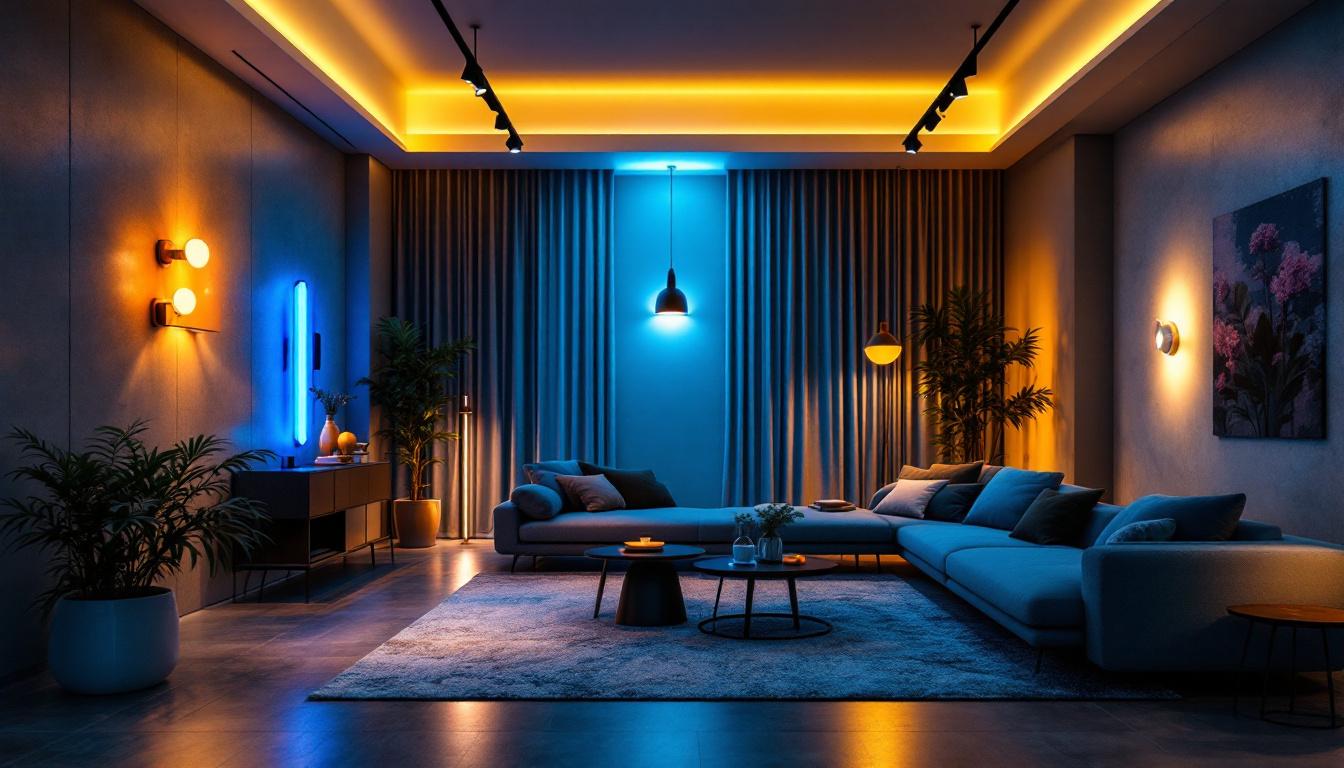
Lighting projects can be complex undertakings, often requiring a delicate balance of aesthetics, functionality, and cost-effectiveness. For lighting contractors, the stakes are high. A single misstep can not only lead to financial losses but also damage to reputation and client relationships. Understanding common pitfalls and how to avoid them is essential for successful project execution. This article explores critical considerations that can help lighting contractors steer clear of costly mistakes in their projects.
Before diving into any lighting project, it is crucial to have a comprehensive understanding of the project requirements. This includes not only the technical specifications but also the client’s vision and expectations.
Engaging in thorough discussions with clients is the first step in understanding their needs. Ask open-ended questions to gather insights into their preferences, budget constraints, and the intended use of the space. This dialogue can reveal important details that may not be immediately apparent, such as the desired ambiance or specific functionality of the lighting.
Additionally, documenting these discussions can serve as a reference point throughout the project, helping to ensure that the final outcome aligns with the client’s vision. Miscommunication at this stage can lead to significant rework and dissatisfaction. Furthermore, it can be beneficial to present clients with visual aids, such as mood boards or lighting samples, to help them articulate their preferences more clearly. This interactive approach not only fosters a collaborative atmosphere but also empowers clients to make informed decisions about their lighting choices.
A detailed site assessment is another critical component of understanding project requirements. This involves evaluating the physical space where the lighting will be installed. Factors such as ceiling height, architectural features, and existing electrical infrastructure can all impact the design and implementation of the lighting system.
Take the time to measure the space accurately and consider how natural light interacts with the environment throughout the day. This information will inform decisions regarding fixture placement, type, and intensity, ultimately contributing to a more effective lighting design. Additionally, assessing the surrounding environment is essential; understanding how adjacent spaces, landscaping, or urban elements influence light can lead to innovative solutions that enhance both functionality and aesthetics. For instance, if the project is located near a busy street, considerations for glare and light pollution may be necessary to ensure that the lighting design is both effective and considerate of the broader community.
Once the project requirements are clear, the next step is selecting appropriate lighting solutions. This process can be fraught with challenges, as the market is saturated with various products and technologies. With advancements in smart lighting and energy-efficient designs, it can be overwhelming to navigate through the myriad of options available to consumers and professionals alike.
When evaluating lighting products, it is essential to consider factors such as energy efficiency, longevity, and maintenance requirements. LED fixtures, for example, are often favored for their low energy consumption and extended lifespan. However, not all LED products are created equal, and it is vital to research and select high-quality options that meet the project’s needs. In addition to LEDs, there are also other innovative lighting technologies, such as OLEDs and smart lighting systems, which can offer unique benefits like customizable brightness and color settings, allowing for a more dynamic lighting experience.
Furthermore, understanding the color temperature and color rendering index (CRI) of the selected fixtures can significantly impact the overall aesthetic of the space. A well-lit area not only enhances functionality but also contributes to the overall mood and atmosphere. For instance, warmer color temperatures can create a cozy and inviting environment, ideal for residential spaces, while cooler temperatures are often preferred in commercial settings to promote alertness and productivity. Additionally, considering the placement of fixtures can help in achieving the desired lighting effects, as strategic positioning can minimize shadows and highlight architectural features.
Budget constraints are an inevitable part of any lighting project. It is essential to establish a realistic budget early on and stick to it throughout the project lifecycle. This involves not only the cost of fixtures but also installation, maintenance, and potential future upgrades. Investing in quality products may seem like a higher upfront cost, but the long-term savings on energy bills and reduced maintenance can make them a more economical choice over time.
To avoid overspending, consider creating a tiered budget that allows for flexibility. Allocate funds for essential components while reserving a portion for unexpected expenses. This approach can help mitigate the risk of financial strain as the project progresses. Additionally, exploring available rebates and incentives for energy-efficient lighting can provide significant savings, making it easier to stay within budget while still achieving high-quality results. Engaging with suppliers who offer warranties or service agreements can also provide peace of mind and further protect your investment in the long run.
Effective installation practices are crucial for the success of any lighting project. Poor installation can lead to a host of issues, including safety hazards, inefficiencies, and aesthetic shortcomings.
Safety should always be a top priority during installation. Familiarize yourself with local electrical codes and regulations to ensure compliance. This includes understanding grounding requirements, load calculations, and circuit protection measures.
Additionally, utilizing qualified personnel for installation tasks is essential. Ensure that all team members are adequately trained and equipped to handle the specific challenges of the project. This not only enhances safety but also contributes to a smoother installation process.
Before finalizing the installation, conducting thorough testing is vital. This includes checking for proper functionality, light levels, and color consistency. A well-lit space should not only meet the client’s expectations but also adhere to industry standards.
Quality assurance checks can help identify any issues early on, allowing for timely corrections. This proactive approach can save both time and money, preventing costly rework later in the project.
Successful project management is a cornerstone of any lighting project. It involves coordinating various elements, from scheduling and budgeting to communication and quality control.
Maintaining open lines of communication with all stakeholders is essential for project success. This includes not only the client but also suppliers, subcontractors, and team members. Regular updates and check-ins can help ensure that everyone is aligned and aware of any changes or challenges that may arise.
Utilizing project management tools can streamline communication and keep everyone on the same page. These tools can facilitate document sharing, scheduling, and task tracking, helping to enhance overall efficiency.
Monitoring project progress is crucial for staying on track and within budget. Establishing key performance indicators (KPIs) can help assess whether the project is meeting its goals. Regularly reviewing these metrics allows for timely adjustments and can prevent potential delays or cost overruns.
Additionally, documenting progress can provide valuable insights for future projects. This information can help refine processes and improve overall project execution.
Once the project is complete, conducting a post-project evaluation is essential for continuous improvement. This process involves assessing what worked well and identifying areas for growth.
Gathering feedback from the client is a critical component of the evaluation process. This can provide valuable insights into their satisfaction with the final outcome and the overall project experience. Consider conducting a formal survey or informal discussion to capture their thoughts.
Understanding the client’s perspective can help identify strengths and weaknesses in the project execution, informing future endeavors and enhancing client relationships.
In addition to client feedback, it is beneficial to hold a team reflection session. This allows team members to share their experiences, insights, and suggestions for improvement. Creating an open environment for discussion can foster collaboration and innovation, ultimately leading to better project outcomes in the future.
By reflecting on both successes and challenges, the team can develop strategies to mitigate similar issues in future projects, enhancing overall efficiency and effectiveness.
The lighting industry is constantly evolving, with new technologies and design trends emerging regularly. Staying informed about these changes is essential for lighting contractors looking to remain competitive.
Participating in continuing education opportunities can help contractors stay up-to-date on the latest advancements in lighting technology and design. Workshops, webinars, and industry conferences are excellent avenues for learning and networking with other professionals.
Additionally, many manufacturers offer training programs on their products, which can provide valuable insights into best practices and innovative solutions.
Building relationships with other industry professionals can also provide valuable insights into emerging trends and best practices. Joining industry associations or local trade groups can facilitate networking opportunities and foster collaboration.
Engaging with peers can lead to the sharing of knowledge and resources, ultimately benefiting all parties involved and enhancing the overall quality of lighting projects.
Lighting projects present unique challenges that require careful planning, execution, and evaluation. By understanding project requirements, selecting appropriate solutions, adhering to best practices in installation, and effectively managing the project, lighting contractors can avoid costly mistakes and deliver exceptional results.
Moreover, ongoing education and networking are vital for staying informed about industry trends and innovations. By committing to continuous improvement and fostering strong relationships with clients and stakeholders, lighting contractors can enhance their reputation and drive long-term success in their projects.
Ultimately, the key to avoiding costly mistakes in lighting projects lies in a proactive and informed approach. By prioritizing communication, quality, and safety, contractors can navigate the complexities of lighting design and installation, ensuring that each project is a resounding success.
Ready to elevate your lighting projects and avoid those costly mistakes? At LumenWholesale, we provide the tools you need to succeed. Our spec-grade lighting products combine quality with unbeatable wholesale prices, giving you the edge in every project. Say goodbye to middleman markups and hello to a vast selection of industry-standard lighting solutions. Plus, with free shipping on bulk orders, you can trust that you’re getting the best value without any hidden costs. Don’t compromise on quality or price. Visit LumenWholesale now for wholesale lighting that truly shines.

Discover how lighting contractors can elevate their projects by mastering the integration of motion sensors, light sensors, and LED lights.

Discover the growing importance of LED lighting in the industry, its benefits like energy savings and sustainability, and how it’s transforming illumination—learn more now!.

Discover the secrets behind top lighting contractors and their choice of affordable grow bulbs.

Explore the transformative impact of LED lighting on modern design and installation practices.